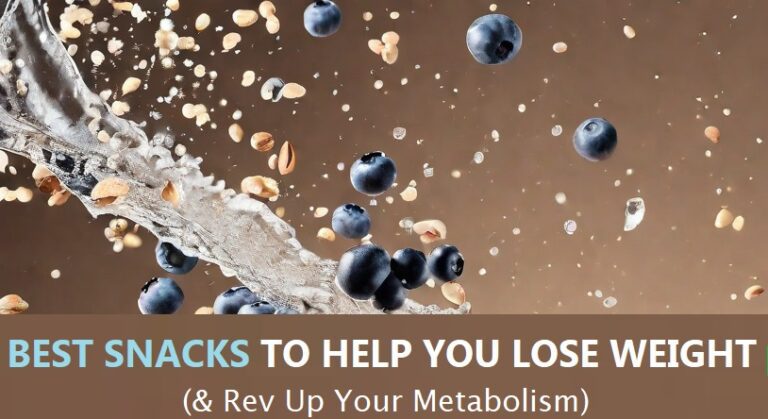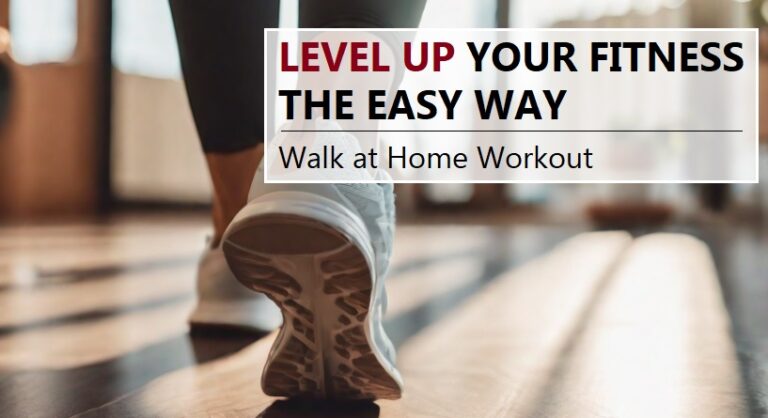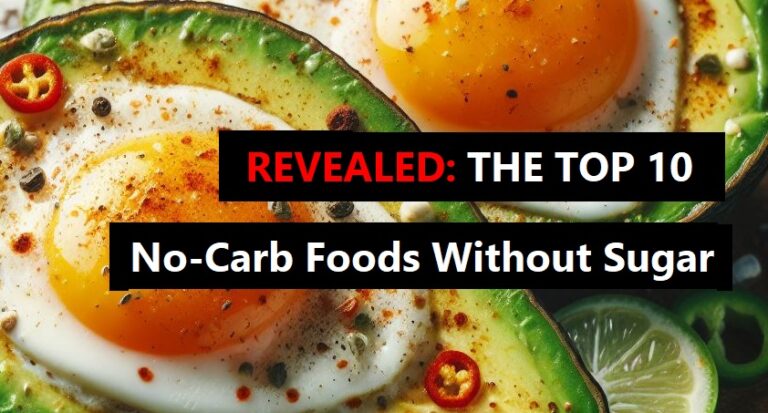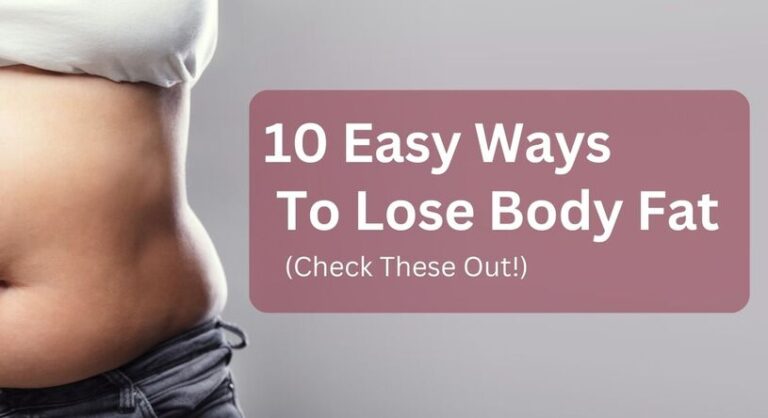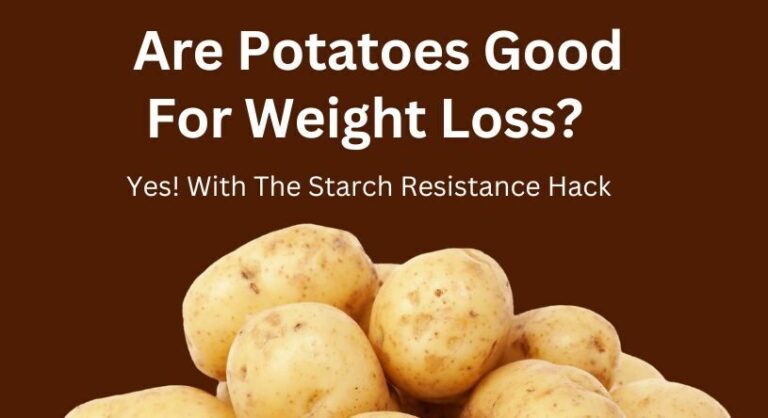Quick Start Keto Guide – For Beginners
Contents
- 1 keto diet for beginners – weight loss steps
- 2 How the ketogenic diet works
- 3 Different types of ketogenic diets
- 4 How does the keto diet help you lose weight?
- 5 List of foods to avoid on keto
- 6 Best foods for the ketogenic diet
- 7 Easy keto snacks for beginners
- 8 Which vegetables are low in carbs?
- 9 Foods to avoid on the keto diet
- 10 How do you calculate Macronutrients
- 11 The benefits of the Ketogenic diet
- 12 How do you get to ketosis?
- 13 How long Does it take to get into ketosis?
- 14 Side effects of a ketogenic diet include…
- 15 How to start a ketogenic diet
- 16 Hacks On Eating Out and Not Breaking Your Diet
- 17
- 18 keto side effects first week And how to minimize them
- 19
- 20 Supplements for Ketogenic Diet
keto diet for beginners – weight loss steps
Got questions about the ketogenic diet and whether it’s worth a shot? Well, you’re in the right place. In a nutshell, this is a low carbohydrate diet based on eating natural fats with adequate protein intake in order to achieve optimal ketosis (the formation of ketone bodies).
The ketogenic diet drastically reduces carbs, usually to just 2-5% of total calories versus the standard 45-65% from carbs in a typical Western diet.
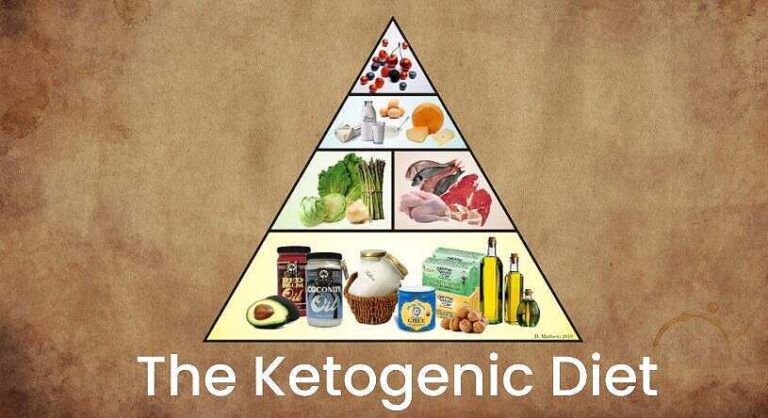

But if you think the keto diet is just another “high protein” diet, then think again. What this diet actually is is a high-fat diet with moderate protein intake and carbohydrate restrictions.
The goal is to reach a state of “optimal ketosis,” where your body switches from burning carbs to burning fat and producing ketones for fuel. It’s the ketones that make this a “keto” diet.
Now we’ve gotten that out of the way, let me give you some information on how to start a ketogenic diet in this quick start keto guide for beginners. We’ll look at what foods you can eat, what foods you should avoid, and how to calculate your macronutrients and enter ketosis. It sounds complicated, but as you’ll see below, it’s actually quite simple
How the ketogenic diet works
Glucose is the simplest molecule for your body to convert and use as energy. This molecule will be chosen over all others by your body for fuel.
Insulin is a hormone that helps metabolize the glucose in your blood. Because glucose is the primary energy source, your body stores it in reserve. This stored type of glucose (formed by lots of connected glucose molecules) is called glycogen.


When you digest high-carbohydrate foods, your body converts the energy into blood sugar (glucose). The more carbohydrates you eat, the more glucose is in your blood. Too much glucose in the blood, as many diabetics are painfully aware, is toxic to our bodies.
When you drastically reduce your carbohydrate intake, instead of glucose, your body is forced to use fat as an energy source. The liver converts fat into ketones, which function as a source of energy, and the body enters what is called “a state of ketosis.” Staying in this state of ketosis is behind the rapid weight loss associated with the ketogenic diet.
Needless to say, the main goal of the ketogenic diet is to achieve the optimal state of ketosis.
Ketones, by the way, are an excellent source of energy for the brain and heart.
Do not confuse the ketogenic diet with diabetic ketoacidosis, which is a totally different condition. Ketosis in diabetic ketoacidosis occurs when you have high blood glucose levels with high levels of ketone body pathology. In the ketogenic diet, you have low glucose levels with high levels of ketones.
Different types of ketogenic diets
- Standard Ketogenic Diet (SKD): This type of ketogenic diet is high in fat and low in carbohydrates. The carbohydrate intake on this diet is 5%, with 20% protein and 75% fat. When most people talk about a keto diet, they’re usually referring to the standard Ketogenic Diet (SKD).
- High-protein ketogenic diet: This diet is similar to the standard ketogenic diet but contains significantly more protein. Athletes are more likely to use it. This diet contains 5% carbs, 60% fat, and 35% protein.
- Cyclical Ketogenic Diet (CKD): This diet is divided into two cycles: a low-carbohydrate, high-fat diet for one to two days, followed by a two-day high-carbohydrate diet to replenish glycogen stores. It is mainly used by bodybuilders and has very little research behind it.
- Targeted Ketogenic Diet (TKD): This variation of the Ketogenic diet is similar to CKD, but you can add carbs before training and after training. This variation is ideal for athletes and those involved in high-intensity sprinting.
Just as a side note, sprinting when you’re on a low-carbohydrate diet isn’t the best idea. This goes doubly when someone is also on a low number of calories. On the other hand, people who are maintaining or trying to gain weight on a Cyclical Ketogenic Diet (CKD) could try sprinting, but it’s still not going to be as easy as someone consuming the standard amount of carbohydrates.
Here, we will only be covering the standard ketogenic diet. The cyclical ketogenic diet and targeted ketogenic diet are more geared towards athletes and bodybuilders.
How does the keto diet help you lose weight?
Without a doubt, going on a keto diet for weight loss makes sense for getting rid of excess weight. It’s also an extremely effective way to reduce body fat and lower your risk of metabolic diseases. Recent studies have found that this type of diet is far more effective than low-fat diets, particularly for fat loss. (1)


In a UK study, they discovered that patients on the ketogenic diet lost weight twice as fast as patients on the diabetic diet recommended by UK authorities. (2)
As the ketones increased, blood sugar dropped, and insulin sensitivity improved. (3) It’s this that helps control hunger and cravings, making it easier for dieters to stay the course. Also, since you’re severely limiting certain foods, this way of eating helps remove the issue of counting calories.
List of foods to avoid on keto


In short, you should avoid or (where you can) eliminate any food that is high in carbohydrates.
Here is are a list of foods you should reduce or eliminate within your ketogenic diet.
- Sugary foods: soda, fruit juice, smoothies, cakes,ice cream, crisps etc.
- Grains or starches: Products made from wheat, rice, pasta, cereals, etc.
- Fruit: A majority of fruit should be avoided because of the high sugar content. Many people still eat berries, but you still have to exercise portion control with these. Be particularly careful about raspberries, blueberries, and cranberries
- Beans or legumes: peas, beans, chickpeas, lentils, etc.
- Vegetables and Tubers: potatoes, sweet potatoes, carrots, turnips, etc.
- Products or low-fat diet: These are highly processed and often rich in carbohydrates.
- Some spices or sauces: These often contain sugar and unhealthy fat, sauces such as Barbecue sauce, ketchup, and salad dressings. Spices also have carbs – but there are certain ones that have more carbs than others. These include onion powder, cinnamon, garlic powder, allspice, bay leaves, ginger and cardamom.
- Unhealthy Fats: Limit your consumption of processed vegetable oils, mayonnaise, etc.
- Alcohol: Due to the high carbohydrate content, many alcoholic beverages will harm your state of ketosis.
- Artificial sweeteners: These often are rich in sugar alcohols, which can affect your ketone levels. These foods are highly processed. There have been reports of people being knocked out of ketosis after consuming a lot of artificial sweeteners. There are also studies that report on a link between sugar cravings and artificial sweeteners – so these will make it harder for you to curb those cravings.
Best foods for the ketogenic diet
Your meals should be based on these foods:
- Meat: Red meat, meat, sausage, chicken and turkey.
- Fish: such as salmon, trout, tuna, and mackerel.
- Eggs: Consume whole eggs containing omega-3.
- Butter and cream: Preferably coming from grass-fed animals.
- Cheese: Cheese Raw (cheddar, goat, cream, blue cheese or mozzarella).
- Nuts and seeds: Almonds, walnuts, flax seeds, pumpkin seeds, chia seeds, etc.
- Healthy oils: Mainly try to consume extra virgin olive oil, coconut oil and avocado oil.
- Avocado: whole or freshly made guacamole Avocados.
- Low-Carb Vegetables: The majority of green vegetables, tomatoes, onions, peppers.
- Seasonings: You can use salt, pepper, herbs and spices.
It’s best to base your diet on these types of foods.
Easy keto snacks for beginners
If you get hungry in between meals, I’ve included a list of ketogenic diet snacks below.
- Dark chocolate (90% or more of pure cocoa)
- A low-carb milk like almond milk, cocoa powder and almond butter
- Yogurt mixed with almond butter and cocoa powder.
- Strawberries and cream
- Celery with guacamole and salsa
- Fish or meat
- Cheese.
- A handful of nuts or seeds
- Cheese with olives
- 1-2 boiled eggs
Which vegetables are low in carbs?
Glad you asked, below are some low-carb vegetables (keto-friendly) for you to incorporate into your new diet.
- Spinach
- Romaine lettuce
- cauliflower
- Broccoli
- Green beans
- Cabbage
The majority of your meals should include protein and vegetable fat. For instance, chicken with oil, broccoli with cheese, and olive oil. If you get hungry during the day, you can snack on almonds or cheese.
Remember that not all fats are created equal. Trans fats (found in fried foods, processed meat burgers, and margarine) differ greatly from natural fats such as coconut oil, avocado oil, and olive oil. The latter fats are extremely beneficial to your health, whereas trans fats are detrimental. Just be aware that trans fats are commonly found in processed foods. Avoid whenever possible.
Click >>> here for the complete list of low-calorie vegetables for ketosis.
Foods to avoid on the keto diet
Menu planning is essential for success on the ketogenic diet. Eating out when you’ve forgotten to bring lunch is a risky idea. You don’t want some processed, high-carbohydrate fast food to knock you out of ketosis and undo all of your hard work.
The most important thing to remember is that the lower your net carb intake, the faster you will reach the optimal state of ketosis.
Net Carbs are calculated by subtracting the fiber content and any sugar alcohols (if present) from the total carbohydrate content of the food. The Net Carbs figure represents the grams of carbohydrates that have a significant impact on your blood sugar levels – these are the only carbs you should be counting.
Low-Net Carbohydrate foods include nutrient-dense vegetables and certain fruits, which do not have a large impact on blood sugar and are thus less likely to interfere with weight loss.
For example, if you want to eat a cup of broccoli, here’s the breakdown:
- It has 6 grams of carbohydrates
- It has 2 grams of fiber
- Subtracting 6 grams of carbs – 2 grams of fiber gives you 4 grams of net carbs.
Your intake should consist of 70% fat, 25% protein, and 5% carbohydrates.
Carbohydrates you can eat (you must count calories to not go over 5% daily) include nuts, vegetables, and dairy products.
How do you calculate Macronutrients
Macronutrients are the grams of fat, protein and carbohydrates you should eat in one day. To make it easier, you can use our macro calculator (below) to calculate daily macronutrients:
Macros Calculator
The benefits of the Ketogenic diet
This is a diet that produces ketones, is low in carbohydrates, high in natural fats, and allows you to lose weight quickly. It is used to treat gastritis, lower triglycerides, and treat fatty liver.
This diet has far more benefits than are typically advertised. The antioxidant and anti-inflammatory properties of ketosis are extremely potent. In fact, ketosis has been used in studies to treat a variety of metabolic syndromes.
It has shown excellent results in people with metabolic diseases (such as diabetes) and in controlling these diseases. ( 1 )
It is being tested in clinical trials for the treatment of certain cancers and the prevention of Alzheimer’s disease. ( 2 ) ( 3)
The Keto diet is by no means new. In 1921 it was used as a treatment for refractory epilepsy in children with nearly 60% effectiveness. ( 4 )
See also: Are potatoes good for weight loss?
1. Benefits of the Keto diet for weight loss and more…
This is one of the most effective diets for losing weight. Most people on ‘normal’ (high carb) diets are in glycolysis, which means their bodies rely on blood glucose for energy. When you feed your body glucose, it stores fat as an energy reserve (which is why most people can’t lose weight). In addition, the ketogenic diet is good for your health (though everyone is different).


What typically happens if your body requires energy in a “normal” metabolic state:
🡪 First, it uses glucose in your bloodstream as an energy source.
🡪 When there is no glucose in the bloodstream, it converts liver glycogen to glucose.
🡪 If you do not use glycogen as an energy source, your muscles and fat will be used (fat being the last resort).
When you’re in Ketosis, as you would be on the keto diet, fat goes first! There is no risk of muscle loss because your body transforms into a laser-targeted fat-burning machine. So the keto diet is one of the best diets for losing fat while retaining as much muscle as possible (bodybuilders use this diet to define their muscles).
Eating 70% fat and low carbohydrates 5% triglycerides and cholesterol
This diet defies conventional “healthy” eating. However, hundreds of studies conducted over the last 30 years show that a low–carb diet is superior to a low–fat diet. The issue is that our food industry was designed to follow a low-fat diet (due to an erroneous choice made in the 1950s).
This was a time when food companies wielded significant (and probably not so impartial) power over what was good for us. The ketogenic diet was thought to help you lose weight but also increases your cholesterol.
In a 2006 study, 66 obese men with BMIs greater than 30 and hypercholesterolemia (high cholesterol) were studied. They were all put on a ketogenic diet and their cholesterol levels were checked.
Other facts:
- In a ketogenic state, the brain consumes 20% of total body energy.
- The brain is made up of 80% fat.
- At 100 calories per day, the body sweats, exhales, and excretes ketones.
2. The Ketogenic diet could treat certain diseases
There have been studies conducted on people with high glucose levels are more likely to develop cancer, and people with cancer and hyperglycemia have a lower chance of survival. The reason for this is that cancer cells use glucose as their primary source of energy.


Since 1920, the ketogenic diet has been used to treat refractory epilepsy (when drugs no longer work) in children.
It was able to control the disease and, in many cases, eliminate the need for drugs in diabetic patients. (Warning: if you are diabetic, you should do the diet under medical supervision because it is often very effective at lowering glucose, requiring medication adjustments).
It also lowers beta amyloid levels, a hallmark of Alzheimer’s disease. By reducing this damaging plaque, the keto diet is believed to play a role in slowing down the progression of this condition
3. Ketosis and hunger
There are a few reasons why eating protein and fat makes you feel fuller for longer. First, protein has a high satiety value, which means it helps you feel full and satisfied after a meal. Protein also takes longer to digest and metabolize, resulting in a longer feeling of fullness.
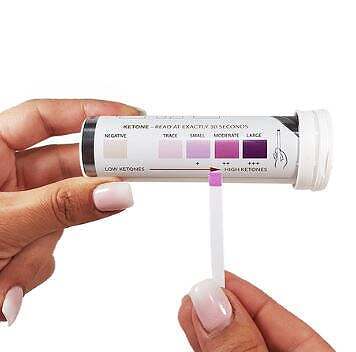

Furthermore, dietary fat is a high-calorie source with a slow digestion rate. Foods high in fat take longer to empty from your stomach, resulting in a longer feeling of satiety.
Fat also slows carbohydrate absorption, preventing blood sugar spikes and the following crashes that can lead to cravings and hunger.
How do you get to ketosis?
To start your journey into ketosis, one of the first things you need to do is significantly cut back on your carb consumption. As you now know, ketosis happens when carbs are no longer a viable energy source and your glycogen stores are depleted.
If we’re to break down the ideal macronutrient ratios: Go for 65% of your daily calories coming from fat. Yes, fat takes center stage! Fueling your body with healthy fats will be the key to this working and dropping the weight.
As for protein, aim to get 30% of your calories from protein. This preserves that precious muscle mass that we need to keep our metabolism high.
Finally, and this cannot be stressed enough, keep those carbs in check. They should only account for only 5% of your calorie intake. This flips the script on all traditional eating patterns, but the reason why so many people are advocates for the keto diet is because it works
How long Does it take to get into ketosis?
It will take 10 to 30 days on the ketogenic diet if it is the first time on it. During the adaptation phase, you will experience dizziness, headache, and fatigue. But hang in there, in a few weeks you’ll feel great.
Side effects of a ketogenic diet include…


There are very real withdrawal symptoms from carbohydrate dependence. Your body’s physiology will drive until basal insulin levels decrease to where the proper low insulin level will signal the liver to begin producing ketones (ketosis) and even glucose (gluconeogenesis). At the same time, receding insulin levels will allow fatty acids to be released from adipose tissue into circulation to provide calories. You will also feel:
- Tiredness, eat an adequate amount of protein and fat to avoid this.
- dizziness
- Headache
- Reactive hypoglycemia – If you eat too many carbohydrates your body is accustomed to releasing too much insulin, so your glucose goes down. Read more about it here.
- Polyuria (increased urination times). Ketosis has a diuretic effect, so increase your water consumption to compensate.
- Constipation: This can be alleviated with magnesium supplements.
- Anxiety: You can take supplements of L-Glutamine to solve this.
If you go to the gym you will notice that your strength and stamina decrease, this is normal for 2 weeks while your body gets used to lipid metabolism.
There is no danger from going on the ketogenic diet unless you have kidney problems or are a diabetic type 1. Just remember that the first weeks you will probably have headaches and fatigue, but if you put up with that, you’ll be in better health in a few weeks.
How to start a ketogenic diet
1. Decide on a way to count carbs . I recommend using a fitbit, The popular wristband counts steps, and acts as a diary for your daily food, indicating how many carbohydrates each food has and the amounts of macronutrients and calories you need.
2. Debug the carbohydrates in your fridge. Search all carbohydrates you have in your refrigerator or store and give them away to your neighbor, or someone you know. Be sure not to have bad carbs in your home (no need to have temptation staring you in the face every day).
3. Enlist a list Buy foods that are within the list of foods to the ketogenic diet, this is very important.
4. Be prepared to spend a little more time in the kitchen. This is very important. A menu of the ketogenic diet involves eating real food and cooking. If you can’t cook, try and learn a little cooking, there are many easy to prepare ketogenic recipes.
5. Plan your meals menu. This will help you buy the food needed when you go grocery shopping and help you to know what you are cooking day to day. If you know you’re eating salmon and broccoli in the evening, it’s easier to avoid falling into bad habits of eating refined carbohydrates.
6. Change your habits. If before you went to work for a donut coffee and mocha frappe, change it by going to the coffee and having green tea and 10 almonds.
7. Stay hydrated. Taking six to eight glasses a day.
8. Find a way to keep track of the food and carbohydrates you consume daily. This is very easily done with a fitibit.
9. Do not focus on your weight. Do not obsess over weighing yourself every day, after all the body needs to reach ketosis for that to happen. Focus instead on the health benefits you will be getting on this type of diet.
Hacks On Eating Out and Not Breaking Your Diet
It is not difficult to find a restaurant that is ketogenic diet-friendly.
All restaurants offer dishes based on meat or fish. You can always order these dishes and replace any food high in carbohydrates with vegetables.
You can also eat foods that have eggs, such as an omelet, or eggs with bacon.
One of my favorites is eating hamburgers without bread. You can change the fries for vegetables, and add avocado, chicken, or cheese.
In all Mexican restaurants, you can substitute any food high in carbohydrates for meat, extra cheese, guacamole, salsa, and sour cream.
When you want to eat a dessert, you can ask for strawberries with cream.
keto side effects first week And how to minimize them
Although the ketogenic diet is safe there are some side effects, while the body adapts.
The effects usually last a few days.
The most common side effects are feeling moody, having little energy, increased appetite, insomnia, nausea, upset stomach, and a decrease in athletic performance.
In order to minimize these effects, you can start with a low-carb diet during the first weeks. This can help your body burn more fat, before completely eliminating carbohydrates.
The ketogenic diet can also vary the water and minerals in your body, so you’ll need to add more salt to your meals or take mineral supplements.
Try to consume at least 3.000 to 4.000 grams of sodium, 1,000 mg of potassium and 300 mg of magnesium daily to minimize these side effects.
I recommend you eat until you feel satisfied and avoid counting calories. Usually, the ketogenic diet at the beginning causes weight loss without being overly strict with calorie counting.
Supplements for Ketogenic Diet
Supplements are not required, but can definitely help.
Oil Medium Chain Triglycerides (MCT Oil): We can add to your drinks, this increases your energy and helps raise your ketone levels.
Minerals salts and minerals are important to maintaining your well water levels and minerals in your body.
Caffeine: Caffeine gives you more energy, helps you burn fat, and increases your performance.
Creatine : Creatine has many benefits for your health and performance while you exercise.
Protein Powder: You can add half a tablespoon of protein to your yogurt to increase your protein intake.
Bibliography:
(1)Mol Cell Biochem. 2006 Jun;286(1-2):1-9. Epub 2006 Apr 21.
http://www.biomedcentral.com/content/pdf/1743-7075-6-31.pdf






